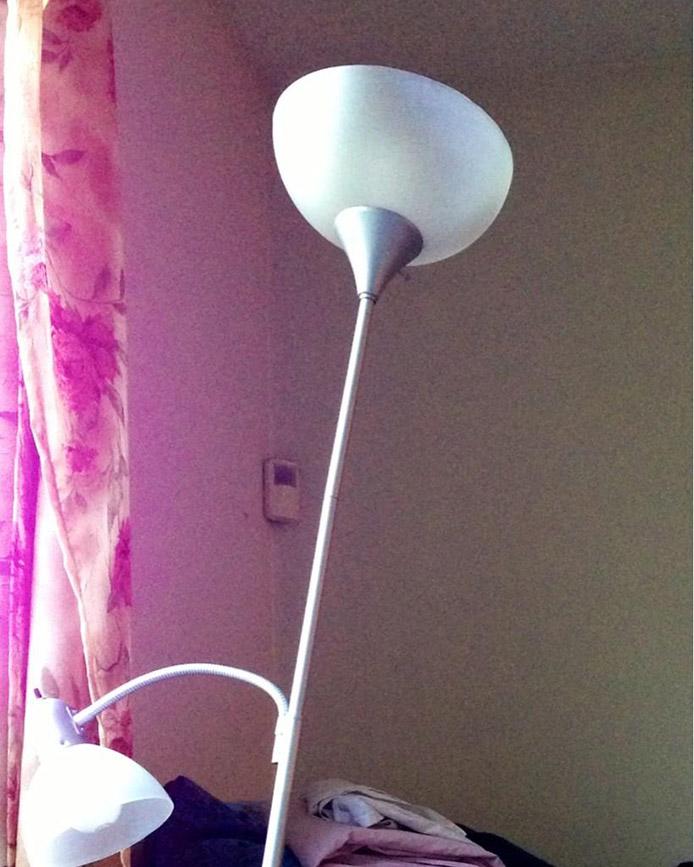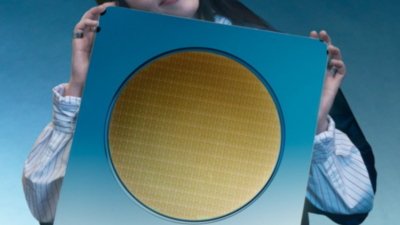An AnandTech forum thread started on Monday regarding "purple flare" or "purple haze" anomalies in images taken by the iPhone 5 has sparked concern that the issue is related to a possible defect, however further investigation reveals the problem is common with many modern digital cameras, especially miniaturized units.
While posters to the now three page-long thread are quick to claim the purple haze is a flaw in Apple's 8-megapixel shooter, the problem is actually common to digital photography and is called chromatic aberration, otherwise known as "purple fringing." The image distortion is especially evident when a strong specular light source, like the sun or a flashlight, is present in or near the image.
Some speculated the purple fringing seen with the iPhone 5 was caused by either a fault in the camera's design, new lens structure or sapphire lens cover, however it appears the problem lies in one of the most basic shortfalls of camera technology: distortion.
As with all optical elements in a camera's lens array, light is bent at different angles as it passes through the substrate, usually some form of glass or plastic, to converge at a single point on the focal plane. In the case of digital cameras, the focal plane is the unit's imaging sensor which, in the case of the iPhone 5, is of the backside-illuminated CMOS variety.
At issue is a lens array's refractive index which numerically represents the manner in which light, or more specifically wavelengths of light, moves through the optics system. Ideally, a lens will focus all colors, or wavelengths, at a single point on the focal plane, thus creating a near-perfect replication of an image. In practice, however, lenses don't allow for wavelengths to meet at a convergence point, creating what is called chromatic aberration.
Due to a number of factors, including reference tuning, architecture of digital sensors and relatively short focal lengths in smaller camera systems, chromatic aberration usually presents itself in shorter wavelengths like violet.
High-end lenses can be adjusted to deal with axial chromatic aberrations, those that cause color fringing, and are called apochromatic lenses, though these types of systems are costly and bulky as additional glass elements are added to the array. Another form of compensating for the distortion are aspherical lenses that are specially designed to reform light to achieve more accurate focus. These elements are also costly, however, as a multitude of steps are needed to manufacture the glass.
In the end, the iPhone 5's camera most likely has no tangible design flaws and is only a victim of the intrinsic qualities of photography. Perhaps a specialized algorithm can be instituted to compensate for the violet push, though any changes made to the existing post-processing flow will likely throw off other finely tuned aspects of the system.
 Mikey Campbell
Mikey Campbell















 Andrew Orr
Andrew Orr
 Christine McKee
Christine McKee
 Sponsored Content
Sponsored Content
 Wesley Hilliard
Wesley Hilliard
 AppleInsider Staff
AppleInsider Staff

 Amber Neely
Amber Neely









63 Comments
I'd have to see more samples to make a judgment, but it seems like a nonissue to me. I can see the headlines: "iPhone 5 Photos Contain Artifacts When Pointed Directly at Sun". SunGate!
The haters are having a hate-fest of biblical proportions.
The new lens is made of a different material than the 4s. Maybe its the coating of the material on the lens?
I'm a professional photographer. What you are seeing is an artifact initiated by lens flare. This iphone is a teeny camera with a teeny lens. There is nothing wrong with it. But that's why serious photographers are lugging around heavy cameras with heavy lenses. They perform better.
Yeah, this is lens flare. What is it about Apple products and people trying to find every little thing to complain about?